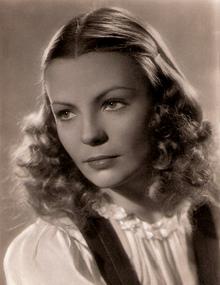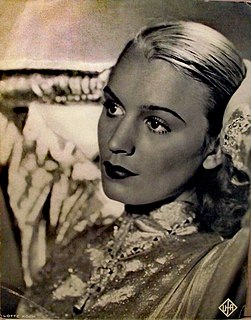Lumpaci the Vagabond may refer to:
- Lumpaci the Vagabond (1936 film), a German / Austrian film
- Lumpaci the Vagabond (1922 film), a German silent film
Lumpaci the Vagabond may refer to:
A vagabond is a person who wanders from place to place without a permanent home or regular work.

Géza von Bolváry was a Hungarian actor, screenwriter, and film director, who worked principally in Germany and Austria.

Hilde Krahl was an Austrian film actress. She appeared in 70 films between 1936 and 1994. She was born Hildegard Kolačný in Brod, Austria-Hungary in 1917, and she died in Vienna, Austria in 1999. In 1944 she married Wolfgang Liebeneiner; their daughter Johanna Liebeneiner also became a famous actress.

Hans Brausewetter was a German stage and film actor of the silent era. He appeared in more than 130 films between 1922 and 1945. He appeared in the 1923 film The Treasure, which was directed by Georg Wilhelm Pabst. He was killed by a bomb blast in Berlin during the final days of the Second World War.
Karl Etlinger was a German film actor. He appeared in more than 110 films between 1914 and 1946.
Edwin Zbonek was an Austrian film director and screenwriter. He directed 14 films between 1960 and 1982. His film Man and Beast was entered into the 13th Berlin International Film Festival.
Lumpaci the Vagabond is a 1936 German / Austrian film directed by Géza von Bolváry, adapted from the play by Johann Nestroy.

Anton Pointner was an Austrian stage and film actor. Pointner's career began on the stages of Austria and performed in both silent and sound films in his native Austria, as well as in Germany and the United States.
Hermann Haller was a Swiss film editor. He also directed four films.
Fritz Richard was an Austrian actor and theatre director.
Werner Brandes was a German cinematographer. Brandes moved to Britain in the late 1920s to work on several prestige films for British International Pictures.

Karl Forest (1874–1944) was an Austrian actor. He was married to the actress Traute Carlsen.

Josefine Dora was an Austrian stage and film actress. She appeared in over 100 films, generally in supporting roles such as in The Virtuous Sinner (1931).
Otto Sauter-Sarto was a German actor. He appeared in 70 films between 1920 and 1956.
Adolphe Engers (1884–1945) was a Dutch writer and actor on stage and in the movies, who appeared in more than fifty films during his career, a number of them in Weimar Germany.

Lotte Koch was a Belgian-born German film actress. She emerged as a star during the Nazi era, appearing in the 1944 drama The Black Robe. Following the Second World War she appeared in several rubble films including And the Heavens Above Us (1947) with Hans Albers.
Carl Ludwig Kirmse (1888–1982) was a German art director who worked prolifically on films during the silent and sound eras.
Lumpaci the Vagabond is a 1922 German silent film directed by Carl Wilhelm and starring Hans Albers, Hans Brausewetter, and Wilhelm Diegelmann.
Willy Gaebel was a German cinematographer active during the silent era. Employed on a number of films at the major studio UFA, he later worked as a still photographer.
Max Wallner (1891-1951) was a German operetta librettist and screenwriter.